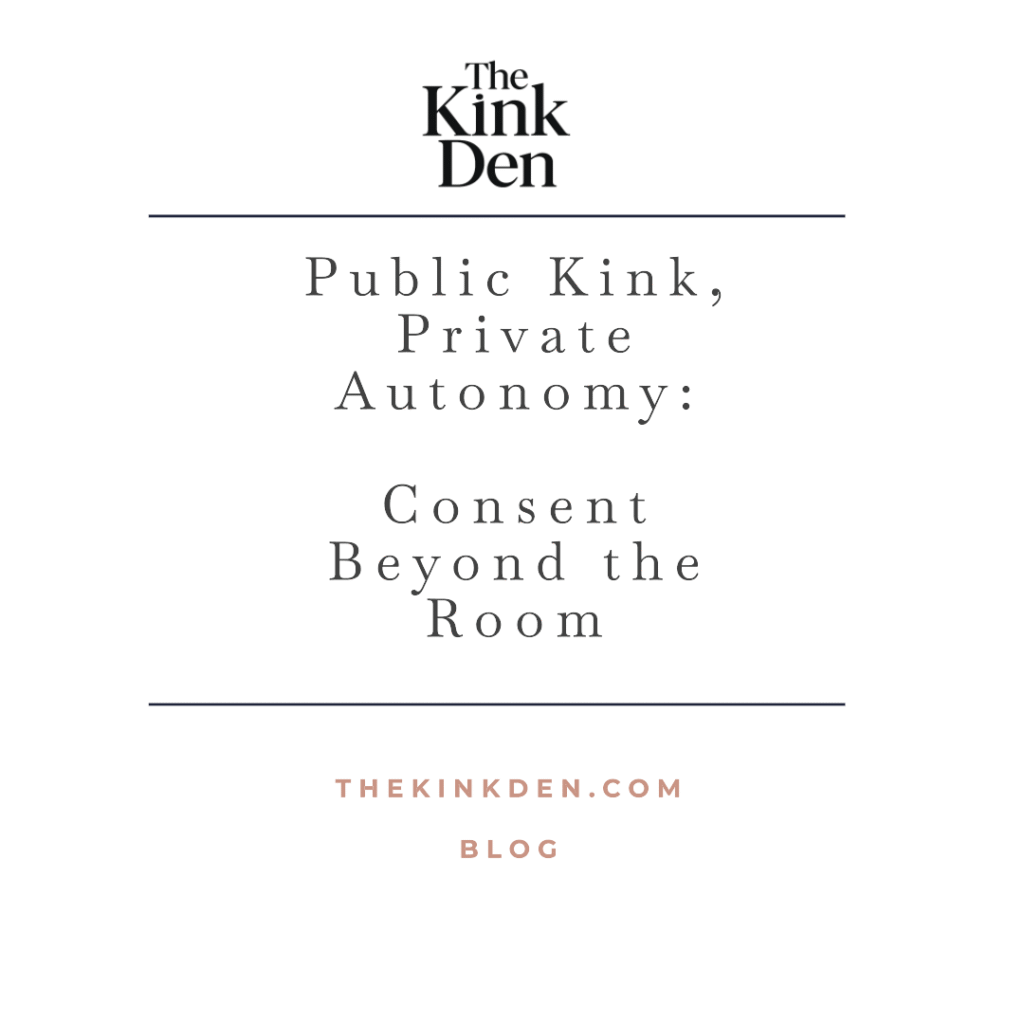Every long term relationship goes through seasons. Some full of passion and closeness, others marked by distance, routine, or disconnection. If you and your partner feel like something’s missing emotionally or sexually, it might be time to explore a new kind of intimacy. BDSM, when practised with care and communication, can be a powerful way for couples to reconnect, build trust, and rediscover desire.
This isn’t about jumping into elaborate roleplay or buying every toy on the market. It’s about using kink as a conscious tool to spark curiosity, deepen your bond, and bring fresh energy into your shared erotic life.
Why Kink Can Reignite Connection
Kink introduces something many long term couples forget to prioritise: intentional play. It brings structure to erotic energy, reintroduces negotiation and consent, and creates opportunities for power exchange, vulnerability, and trust. It also encourages couples to explore outside their usual dynamic, which can be incredibly liberating.
More than just sex, BDSM invites couples to communicate deeply, meet each other’s needs with intention, and co-create new rituals of intimacy. That kind of attention can feel revolutionary in a relationship that’s grown stale or disconnected.
Start With a Conversation, Not a Scene
If you’re thinking of introducing BDSM into your relationship, don’t start with rope. Start with words. A conscious, curious conversation sets the tone for exploration, not pressure.
“I’ve been thinking about how we connect and wondered if exploring some kink or power play together might be something you’d be open to.”
Focus on the emotional connection kink can bring—trust, surrender, play—not just the physical acts. And be ready to listen without defensiveness. If your partner feels uncertain, let the conversation breathe.
Explore Dynamics That Match Your Relationship
There’s no single way to do BDSM as a couple. Explore power dynamics that feel natural or exciting to you. Here are a few starting points:
- Light D/s: Gentle dominance and submission in or out of the bedroom
- Sensory play: Using blindfolds, feathers, or temperature to heighten awareness
- Impact play: Spanking, flogging, or paddling with safety and consent
- Service and rituals: One partner performs acts of service with intention and reverence
- Erotic authority: One partner guides the experience while the other surrenders
Start small. Keep it simple. The goal is connection, not performance.
Use Kink to Build Emotional Safety
BDSM can stir deep emotions, especially when trust has been fragile. That’s why intentional negotiation, consent, and aftercare are vital. You’re not just trying new positions, you’re creating space for power, vulnerability, and transformation.
Set the tone by asking:
- “What makes you feel the most loved or desired during intimacy?”
- “Is there something you’ve always wanted to try but never voiced?”
- “Would it feel good to give up control or take more of it for a while?”
These questions open up not just kink, but connection.
Create Low Pressure Kink Experiments
Not every scene has to be extreme. In fact, the best starter scenes are short, simple, and focused on connection. Try one of these low pressure entry points:
- Blindfold and guide: One partner blindfolded while the other leads gentle touch, voice, and breath
- Verbal Dom/sub scene: Use language only—commands, praise, or permission seeking
- “Yes, Sir / No, Ma’am” dinner: Add protocol or titles to a mundane task like setting the table
- Over the knee spanking: A classic, intimate scene that combines dominance, physicality, and trust
End each scene with deliberate aftercare. That can be cuddling, a warm bath, verbal affirmations, or even quiet space. What matters most is that you tend to the emotions stirred by the play, not just the act itself.
Remember That Roles Don’t Define You
Just because you’re dominant in bed doesn’t mean you have to lead the relationship. Just because you’re submissive during a scene doesn’t mean you’re passive in life. Roles in kink are chosen, temporary, and negotiable. They are not your identity unless you want them to be.
Let go of shame, comparison, or the idea that you’re not kinky enough. Your exploration doesn’t have to look like anyone else’s. If it helps you feel more seen, more wanted, and more connected, that’s enough.
Talk After the Play, Not Just Before
Debriefing is where the magic settles in. After a scene, ask your partner:
- “How did that feel?”
- “Was there anything you want to change or explore more next time?”
- “Did anything surprise you?”
These questions strengthen emotional safety and allow you both to refine what works, what doesn’t, and what you want to build next. Post scene connection is where couples grow kink into something lasting.
Want a Gentle Place to Start?
If you’re ready to explore kink together but not sure where to begin, sign up to our newsletter and download our free BDSM Beginner Guide. Inside, you’ll find:
- Consent and negotiation tools
- Scene starter scripts
- Aftercare tips
- Gear suggestions for curious beginners
Whether you’re reigniting an old flame or discovering new ways to love each other, this guide is your first step toward safe, confident exploration.
Final Thoughts
Long term connection takes more than cohabiting and going through the motions. It takes presence, curiosity, and sometimes, play. BDSM offers couples a doorway back to each other. Not because it’s wild or taboo, but because it requires you to slow down, tune in, and really see the person in front of you.
You don’t need to become someone else. You just need to show up with honesty, care, and the willingness to explore what intimacy could feel like when you let go of the usual script.
Connection is a kink of its own. And every couple deserves to feel it—deeply, intentionally, and on their own terms.




